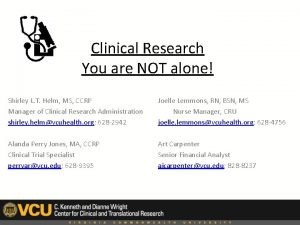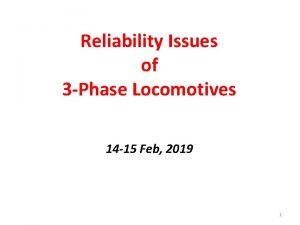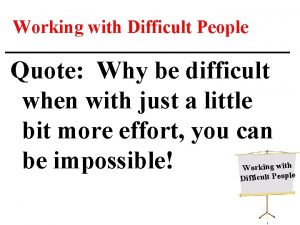Difficult Conversations VCU HEALTH SCIENCES OCTOBER 2019 Why

Difficult Conversations VCU HEALTH SCIENCES, OCTOBER 2019

Why the difficulty? Conflict in the context of health care • For patients, especially, it’s personal! • Organizational structures are complex and bureaucratic, with formal and unwritten rules • Expertise can be decentralized, while information is high stakes • Dynamics of diversity, including gender, generation, culture, and experience

IMPACTS OF WORKPLACE CONFLICT The struggle is real • PRODUCTIVITY • EMPLOYEE RETENTION • HEALTH AND SAFETY • DECISION MAKING • CONTINUITY OF CARE

Nonproductive responses to conflict Confrontational Passive aggressive Conflict averse • Culture of fear • Toxic and retaliatory • Confusion and frustration • Escalates conflict • Lack of accountability • Fosters divisiveness • Erodes confidence and limits contributions of others • Miscommunication • • Incomplete work and projects Lack of direction and loss of momentum

Healthy conflict management MORE THAN A MESSAGE; IT’S A CONVERSATION

1. Setting the stage A time and place for everything An invitation to talk Honor the commitment

2. Intentionality Clarify your concern Attend to self awareness: assumptions, biases, frame of mind Consider potential impact or outcomes Be mindful of choice in language and communication style Prepare your introduction

3. Collaboration Define the issue Identify alignment and common interests Resolve conflicts Create solutions Be clear about next steps

Caution and care in navigating difficult conversations Work to understand how the other person perceives Communicate respect for what the other person values Anticipate what the other person needs Don’t try to control the other person’s feelings Don’t challenge the other person’s sense of self “The Three Conversations” Stone, D. , Patton, B. , and Heen, S. (1999). Difficult conversations: How to discuss what matters most. New York: Viking Penguin.

Additional resources Patterson, K. , Grenny, J. , Mc. Millan, R. , and Switzler, A. (2012). Crucial conversations: Tools for talking when the stakes are high, 2 nd ed. New York, NY: Mc. Graw-Hill. Reynolds, M. (2014). How leaders turn difficult conversations into breakthroughs. San Francisco, CA: Berrett-Koehler. Thomas, K. and Kilmann, R. (2010). Thomas-Kilmann conflict mode instrument profile and interpretive report. Online at https: //www. cpp. com/pdfs/smp 248248. pdf.
- Slides: 10


















